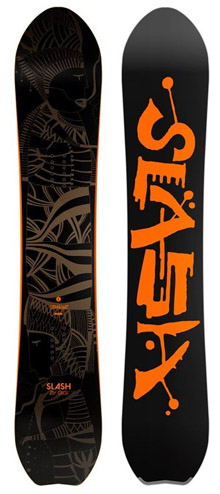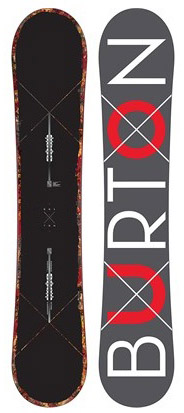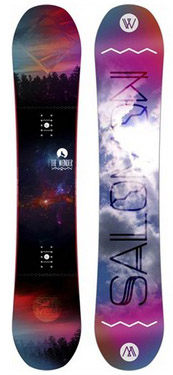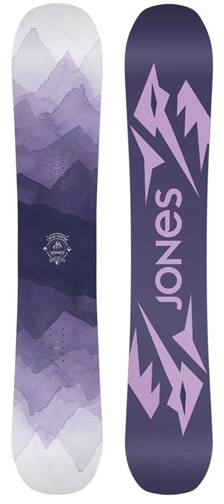Of all the snowboards on the market, why should you choose the all-mountain variety? Well, let’s just say you want a one-board quiver, a ride that will get you from the top to the bottom every day, a new best friend. Down chutes, tight trees, a bit or a lot of pow, through the stash, and on to the terrain park with a half-pipe to finish. If this sounds like your regular day, than you’re reading the right article. If you like riding the entire mountain, our picks for the best all-mountain snowboards for 2014-2015 can handle just about any type of terrain that you come across. Most of these boards are geared toward intermediate to advanced riders—those new to the sport should check out our top snowboards for beginners. If you intend to forego the resort entirely in search of the deep stuff, check out the best freeride snowboards.
Men’s All-Mountain Snowboards

Salomon crossed their most powerful freeride and freestyle boards to produce the Assassin, and it came in at a reasonable price point to boot. This is a playful board that is great for butters, ollies, slashes, switch landings and take offs; pretty much your good old fashioned jib around the mountain true twin. This feel comes from a soft flex in their Rockout Camber, which is flat between the bindings, camber under foot, and a bit of rocker under the tip and tail. This is a great all-mountain shape as the camber gives the grunt and the rocker allows for good pow and park play. Another key feature are the Suspension Royal Cork Rails, which help dampen the chatter from riding variable snow conditions.
Flex: Medium
Sizes: 150, 153, 155, 157W, 158, 160
What we like: An all-mountain board that is freestyle/jib focused.
What we don’t: The 160 max out.

How could we not include Gigi’s board, which was picked as a 2015 Transworld Good Wood Winner. The Slash Straight definitely is more of a pow board than a park board, but it can hang all over the mountain. The flex pattern is a Backseat CamRock combined with a stiff tail and a setback stance. This is pretty much a surfboard for the snow, yet it can handle drops and loaded carves well. On the inside, the Straight features a mix of lightweight woods with carbon and kevlar inserts, and Ultimate Traction in the center of the sidecut delivers good edge hold ice. If you chase pow more than hardpack, prefer a surfy feel, and want a great value, the Straight is your board.
Flex: Stiff
Sizes: 156, 159, 161, 163
What we like: The price.
What we don’t: Best suited for regular pow and doesn’t ride as well in consistently icy conditions.

Jones makes a variety of board shapes for different types of terrain, but the award-winning Mountain Twin is hard to pass up. This board has a progressive flex called CamRock: camber between the feet and rocker on the tip and tail for power and snap. The rocker also makes riding pow switch or regular a dream without effecting your ride on hard snow. Magne-Traction edges are great for those icy traverses and hardpack days (if you haven’t tried it, Magne-Traction is a great solution for hard snow and I especially like this Mellow version as I’ve found it catchy). Jones also increased the nose size of the Mountain Twin to add to its freeride capacity along with a slightly pulled back stance from center, offering a powder friendly ride.
Flex: Medium-stiff
Sizes: 151, 154, 157, 158W, 160, 161W, 164W
What we like: The CamRock shape coupled with Mellow Magne-Traction.
What we don’t: Sizing: this all-mountain deck maxes out at 160 in non-wide sizes.

Rome says this board is for “those who don’t give a sh*t about park,” and we agree. This all-mountain slayer keeps you heading back to the pow, trees, alpine and euro carves with a shape and flex ideal for all-terrain ripping. The directional shape is packed with a new Carbon Double Barrel known as Turborods, and a 2-inch strip of Zylon in the middle provides extra pop and responsiveness. The flex is interesting as the camber features a rocker nose, flat under foot, and a bit of camber under the rear foot. If you’re looking for something to get you around the resort from your favorite stash to the next, this may be your board.
Flex: Stiff
Sizes: 155, 159, 163
What we like: A hard charger made for resort riding.
What we don’t: Not a great freestyle/park board.

Burton’s Custom X has thrived for over ten years for good reason. This all-mountain snowboard delivers huge power underfoot and its lightweight camber design is made for carving in just about any terrain from groomers to pow. Due to the camber and new High Squeezebox, it has very impressive snap too (for solid proof, nearly half of the Olympic half-pipe riders shred with it). Keep in mind that the Custom X is ultra stiff and Burton describes it as the most aggressive model in their line up, so if you’re thinking about buying this thing, better start doing your squats. It really does rip down the mountain but it can be a challenge to tame the beast.
Flex: Stiff
Sizes: 152, 156, 158, 159W, 160, 162W, 164, 164W
What we like: For expert riders who like the feel of traditional camber, you can’t go wrong with this board.
What we don’t: This board is ultra stiff and not everyone’s cup of tea.
Women’s All-Mountain Snowboards

For beginning riders, there is a lot to like about the Burton Feather. First, the soft flex is great the cruising groomers and learning your turns, and the board is symmetrical for riding regular or switch. A standard rocker profile helps prevent edge catching and works for anything from fresh snow to the park. We also like the reasonable price of the Feather, but those who progress will want a stiffer flex and something that can take on more speed. If you’re planning on only getting a handful of weekends this season to learn, this board is a solid choice from one of the most well respected brands in the industry. But if you’re serious about stepping it up soon, you may want to start with a stiffer board.
Flex: Soft
Sizes: 140, 144, 149, 152, 155
What we like: An economical all-mountain board for beginners.
What we don’t: You’ll likely grow out of it in a season or two.

Coming in at a hair under $400, this board suits intermediate riders looking to graduate from their beginner board, or veteran riders looking to freshen up their quiver on a budget. The design features Salomon’s Cross Profile: camber between the feet and rocker in the tip and tail to deliver snappy all-mountain performance from the pow to the park. Salomon packed this board with high quality materials including an Aspen Core and high-density stringers for pop and responsiveness. The board is a medium flex, and if you are into the park, the Wonder also has Royal Rubber Pads in high impact zones for shock and chatter absorption. This is a great all-mountain option for women who plan to ride a good amount in the park.
Flex: Medium
Sizes: 139, 143, 146, 150, 154
What we like: The price.
What we don’t: It’s not a super high performance board.

The Velvet Gnuru offers eco-conscious riders a phenomenal board that can rip the entire mountain. This Transworld Good Wood winner features domestically sourced Aspen and Columbian Gold for the core materials and is manufactured in the U.S.A. The design is a reverse camber between the feet to keep your nose up in the pow and your tips from catching, as well as elliptical camber out to the contact points for responsiveness and drive. The Gnuru also has Mellow Magne-Traction, a great feature for carving in firm conditions. This board is geared toward freestyle riding but is built to ride all over the hill. For the price, you can’t go wrong.
Flex: Medium
Sizes: 139, 143, 147, 150, 153
What we like: Smaller sizes for up and coming riders who want an all-mountain board.
What we don’t: Could be a bit stiff at 139 to 147 depending on the size of the rider.

Not only does Jones make some of the best all-mountain boards for the guys, they deliver with their female-specific designs for smaller and lighter riders. The Twin Sister is made for women who enjoy shredding the pow, dropping cliffs, and popping their 1’s and 3’s. This is a stable, high performance board that can be comfortably ridden all over the mountain. The CamRock Directional Twin profile makes the Twin Sister great for pow riding and Mellow Magne-Traction provides good hold on the firm stuff. Jones even added a new Film Topsheet to increase responsiveness and decrease weight. All in all, this is a great all-mountain board for women who like to mix freestyle and freeride.
Flex: Medium-stiff
Sizes: 143, 146, 149, 152, 155
What we like: Women’s-specific design from Jones.
What we don’t: Jones had some delam factory issues last year, so check it out before you buy.

Lib Tech TRS XC2 BTX Narrows ($560)
Lib Tech continues to dominate with this award winning board. The latest version of the TRS Narrows technically is gender neutral, offering both normal and narrow widths from 148 to 165. In the smaller sizes (the Narrows is 148 and 151), it’s a great solution for women wanting to step up their all-mountain game. The new XC2 BTX was a favorite at the 2014 Good Wood Test, featuring a Power Banana/Camber blend that makes the TRS a great pow board that can still rip in hard conditions. Magne-Traction supports this by offering edge control and the Power Transfer Sidewall adds responsiveness. This is a stiff all-mountain board for women who can really ride.
Flex: Medium
Sizes: 148N, 151N, 154, 157, 159, 162, 165
What we like: An award winning board ten years running.
What we don’t: Although Lib Tech’s boards are durable and made from great materials, I’ve found them to be a bit heavy.
